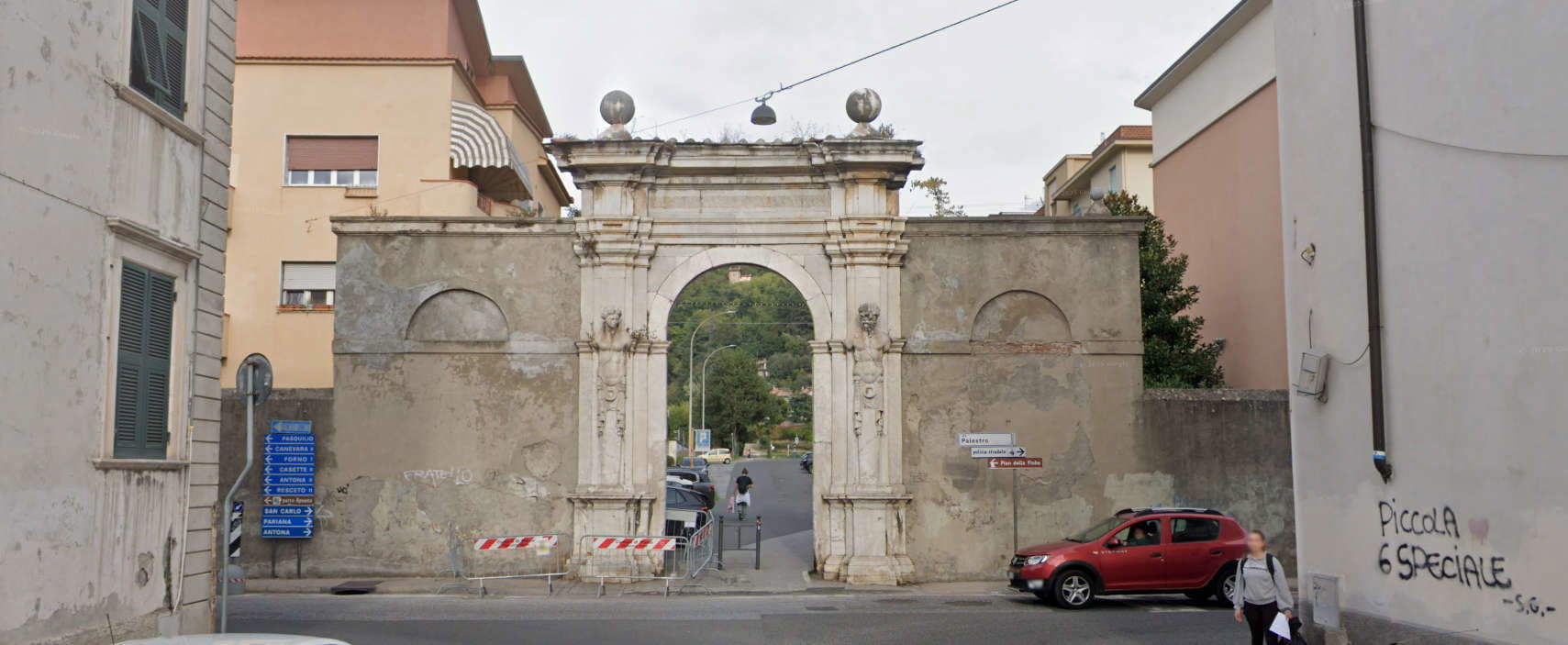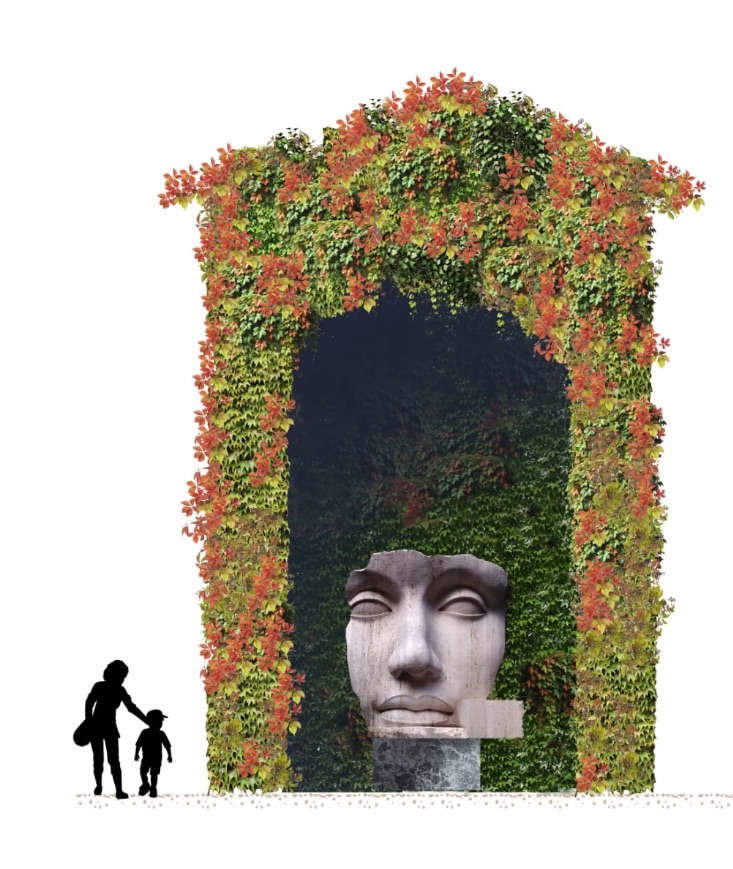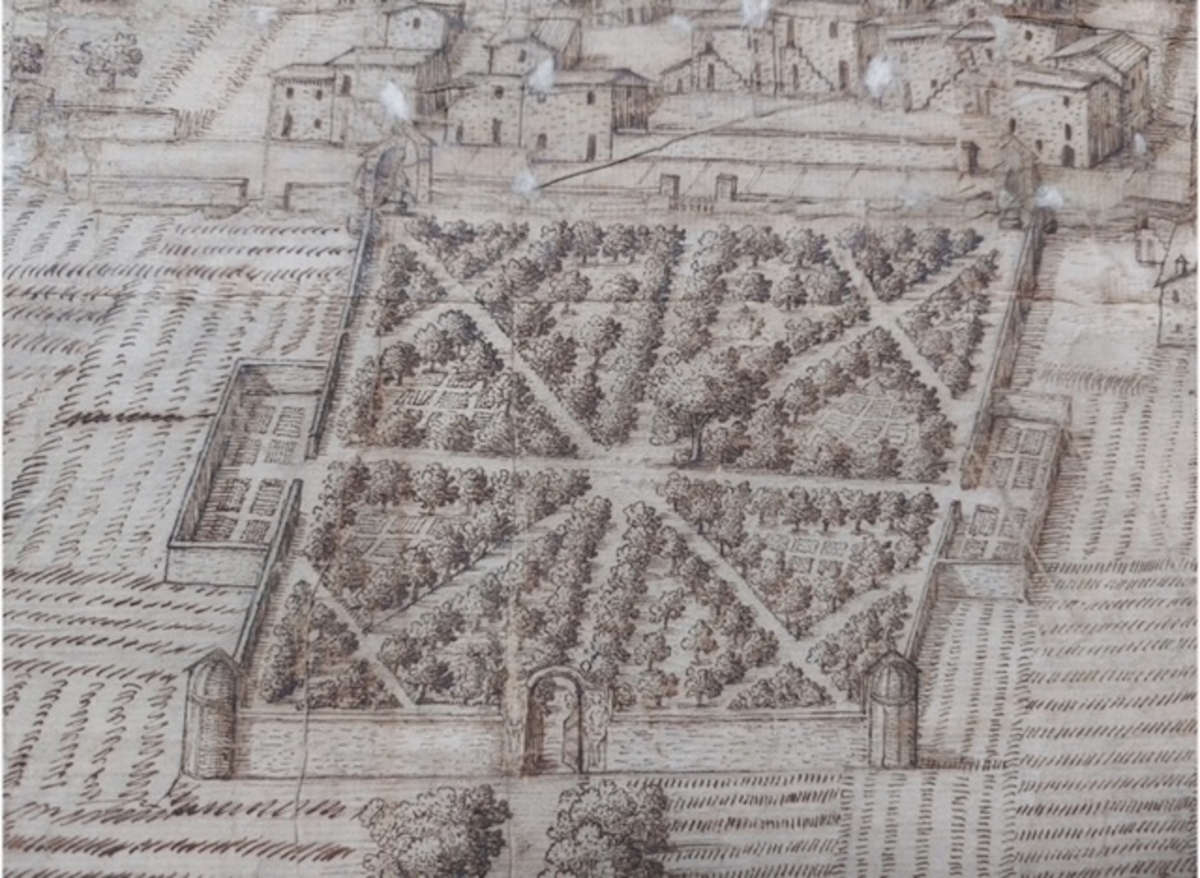The city of Massa is about to experience a significant turning point in the recovery of its historical and cultural heritage, with the imminent start of work to give new life back to the Pomerio Ducale, the historic garden, commissioned by Prince Alberico I Cybo-Malaspina in the 16th century, will once again become a vital place for the community, a space for culture, art and sociality. The final go-ahead for the recovery project, signed by architect Nicola Gallo, was confirmed yesterday by the City Council after a long process of discussion with the Superintendency. Mayor Francesco Persiani stressed the importance of this intervention, calling it “a historic novelty for our territory and our city,” capable of giving back to citizens “a very important place, a cultural heritage that is part of our identity.”
The project focuses on the portion of the garden currently owned by the city, located along Via Palestro. Here, the original Renaissance geometries will be faithfully recreated, recreating the paths that formed an octagon and, above all, the citrus trees, a plant that is a symbol of Massese tradition. Architect Nicola Gallo pointed out that the restoration of this historic garden, built starting in the late 16th century, required extensive research and archaeological investigations. These made it possible to reconstruct the original perimeter and draw inspiration from the last documented phase of the Pomarium.


The Pomerio Ducale of Massa, as described by historical sources, was built after 1558 by Prince Alberico I Cybo-Malaspina, and was configured as an exemplary Italian garden. Located on Via Palestro, just outside the 16th-century walls of the Tuscan capital, it was connected to the road to Carrara by a tree-lined avenue. Characterized by a square shape and surrounded by walls, it was famous for its abundance of citrus trees, many of which were transplanted from other ducal properties, such as the Prado. Alberico’s decision to place the garden outside the walled perimeter he had recently begun to build, and not next to the palace where he resided, was not accidental. This choice was intended to liken Massa, in the Renaissance mentality of the learned ruler, to a new small world, and a hortus conclusus positioned to the west recalled the mythical Garden of the Hesperides, an extraordinary place protected by Atlas and the serpent Ladon, where trees with golden apples grew. Before the prince’s acquisition, the land, although very fertile, was uncultivated, as evidenced by an inscription that has now disappeared. The transformation into a Pomerium involved the creation of major and minor avenues, laid out in a pattern of strict symmetry, with trees planted along these lines to accentuate the geometry of the design. Tall niches were created at the corners of the perimeter walls, intended to house statues of deities. Alberic I made the Pomerium a kind of locus amoenus, enriching it with statues, marble ornaments and even a small menagerie with wild animals, in keeping with the exotic taste of the period.
The botanical varieties were remarkable: the garden welcomed, among other fruit plants, several species of citrus fruits grown on the prince’s properties. Orange trees grew along the network of paths and driveways, citrons were arranged in espaliers, and lemons leaned against the walls that bordered the verzier. There was no shortage of specific varieties, such as so-called “puncigli” (perhaps limon poncinus ligusticus) and sweet lemons, arranged in the most protected corners. A main avenue, flanked by a double row of spectacular cedars that joined at the end to form a striking vault, completed the overall view. The garden, however, did not possess the typical characteristics of the formal garden of the time, as it was not connected to the princely residence in a single complex, as suggested by the canons established by Leon Battista Alberti in his De Re Aedificatoria. Located outside the city walls, it was a place where the ruler could go for short walks, detaching himself from the city context. The presence of numerous citrus trees reinforced the idea that the Pomarium was a “vision” of the Garden of the Hesperides, with its trees laden with “golden apples.”
In the next century, Alberic I’s successor and grandson, Charles I Cybo-Malaspina, further enriched the garden with sculptures and new plantings. In 1655, he had a new entrance portal made, which still exists today and is vulgarly known as the “Portal of Pasquino and Pasquina,” due to the presence of two figures, one male and one female, on either side. The top bore the inscription “Carolus Ps Cybo / Malaspina Princeps / Auctu exinde maiori / Malora Tempe ingressit / MDCLV.”
Views of Massa at the time show the garden as a square bordered by walls and turrets with niches at the corners, inside which tree-lined paths intersected at forty-five degrees. There were two arched entrances, one facing upstream and the other facing the sea, reached by roads that were also neatly treed. These features made the Pomerium fit into the typology of the medieval hortus conclusus, described by Pier Crescenzi in his treatise Opus ruralium commodorum as a square or rectangular space divided by straight avenues and bounded by high walls that enclosed fruit trees and other valuable crops. Although this typology had its origins in the 14th century, two centuries before the Pomerio, this can be explained by a general cultural lag of the Malaspinian and Cybean court compared to more modern canons. The Pomerio had no significant contacts with the Giardino dei Semplici, or contemporary botanical gardens dedicated to the cultivation of medicinal plants.
Unfortunately, there is no detailed information about the statues that were to adorn the garden, nor about the niches carved into the sides and apexes of the high quadrangular wall, some of which can be glimpsed with difficulty in a seventeenth-century drawing preserved in the State Archives of Massa, and descriptions of the sculptural apparatus are vague. Considering the period and purpose of the Pomarium, it is likely that it contained statues related to Greco-Roman mythology, but it cannot be ruled out that subjects more related to sixteenth-century Hermetic culture were represented. Today, much of the ancient hortus, over the centuries gone into decay, is occupied by buildings built in the 1950s and 1960s, which have unfortunately erased almost every trace of the ancient garden. The ancient architectural entrance portal, made entirely of white Carrara marble, and the perimeter walls are still preserved.
Massa’s Pomerio Ducale recovery: the garden is reborn SEO Description (max 150 characters) In Massa, the recovery of the Pomerio Ducale starts: the Renaissance garden becomes a place of art, nature and sociality again.

The recovery project aims to give back to Massa not only a piece of its history, but also a dynamic and multifunctional space. An important part of the restoration will concern precisely the lost architectural elements. Architect Gallo outlined the idea of reconstructing the large niches that were once made of masonry, of which only one inserted into a building survives. The two southern niches in the garden will be reconstructed with a wire structure and in “verzura,” or covered with vegetation.
An innovative aspect of the project is the use of contemporary materials to reinterpret its historical memory. The large niches and the central portal, in fact, will not be made of masonry, but iron structures covered with seasonal creepers. This choice will allow the garden to transform and “breathe” with the city, accompanying visitors through the colors and rhythms of the seasons. The goal is to create a living place that changes and evolves.
Botanical memory will be a central aspect of the recovery. Mayor Francesco Persiani remarked on the intention to revive the collection of citrus fruits that made Massa famous in the past, whose fruits were donated to major Italian courts. It is speculated that some varieties that are highly prized today, such as the Florentine citron lemon, may derive from this historic collection. Local and ancient species, many of which were also part of the Medici collection, will be planted in the “secret garden.” The project also includes elements of innovation and functionality for the public. Lighting will be integrated to make the garden walkable even at night, a video surveillance system to protect the space, and spaces dedicated to sculptures and temporary exhibitions will be created. Architect Gallo reiterated that the Pomarium will be a “garden that follows the seasons” but also a “place of culture, capable of hosting contemporary art and social activities.”
The intervention is part of a larger program of urban redevelopment of the area, as mentioned by PNRR and special projects councillor Maura Ferrari. The rehabilitation of the historic Pomerio garden is linked to the building replacement of the former CAT building and the redevelopment of the surrounding areas. Mayor Persiani expressed his satisfaction with the achievement of this project phase, pointing out that the authorizations are now complete and it is time to start the work. He also linked the project to the development of the surrounding area, from the House of the Arts, to the ex-Cut that is becoming a beautiful building with an auditorium, youth rooms, and bar and restaurant activities, which will give the park in front of it its proper role.
The first batch of work, worth 250,000 euros, will include landscaping, creation of the first paths and planting of citrus trees. Part of the funding for the first lot, about 50 thousand euros, will come from the Pnrr, while the rest will be covered with municipal funds and already available resources. The administration plans to start work in the immediate future and complete it by late spring, with the expectation of completing the first lot by April 2026. The total cost of the entire project is about one million euros, presumably carried out in two batches with completion by 2028. For the overall project, 450,000 euros of PNRR funding has been earmarked for citrus planting and 240,000 euros for urbanization works.
 |
| Massa, reborn the Ducal Pomerio: the project to rebuild the lost Renaissance garden |
Warning: the translation into English of the original Italian article was created using automatic tools. We undertake to review all articles, but we do not guarantee the total absence of inaccuracies in the translation due to the program. You can find the original by clicking on the ITA button. If you find any mistake,please contact us.